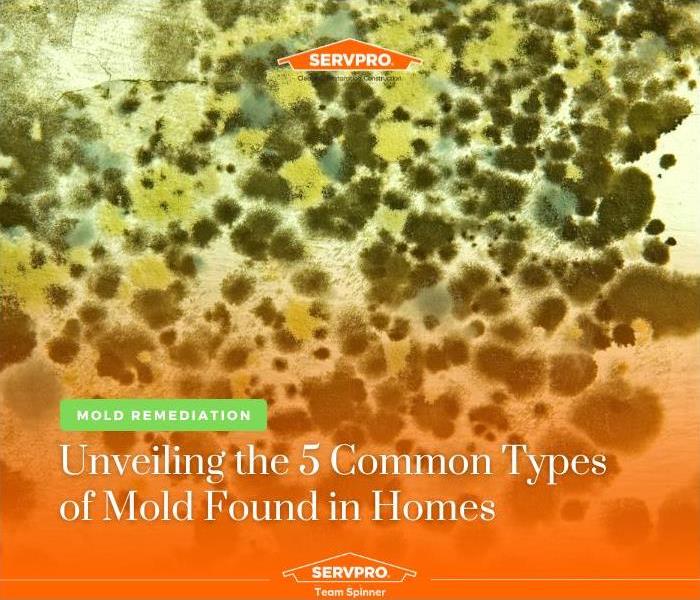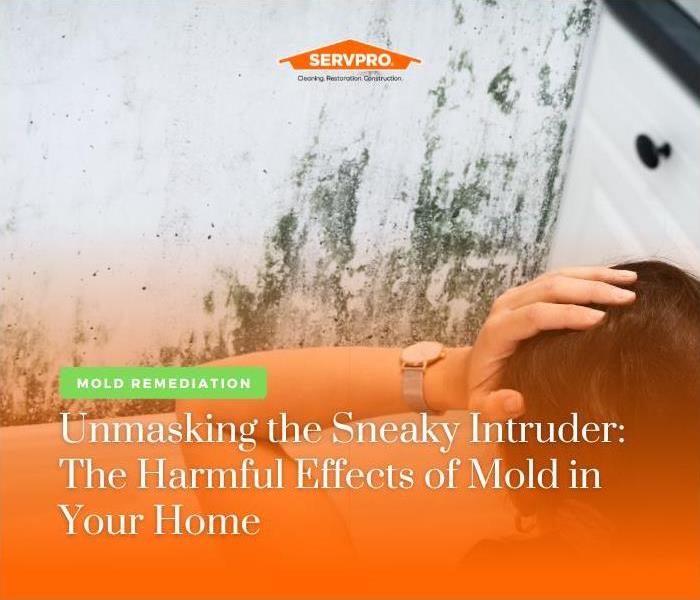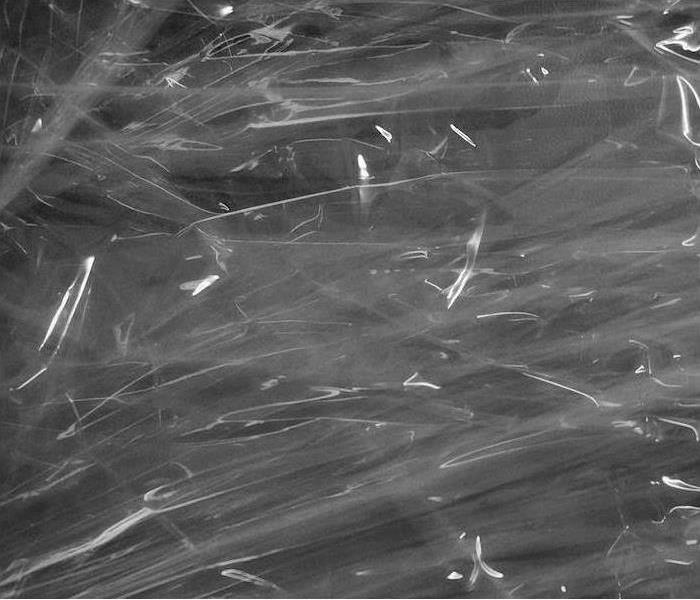Archived Mold Remediation Blog Posts
Unveiling the 5 Common Types of Mold Found in Homes
3/15/2024 (Permalink)
 If you experience mold damage, SERVPRO® Team Spinner is available to help 24/7 with cleanup and remediation.
If you experience mold damage, SERVPRO® Team Spinner is available to help 24/7 with cleanup and remediation.
Do you know what's growing on your walls?
Mold is an unwelcome guest in any home, capable of causing not only structural damage but also health concerns for its inhabitants. Understanding the types of mold commonly found in homes is crucial for effective remediation and prevention. In this blog post, SERVPRO® Team Spinner sheds light on five of the most prevalent types of mold encountered in residential settings.
1. Stachybotrys (Black Mold): One of the most notorious types of mold, Stachybotrys, commonly referred to as black mold, thrives in damp and humid environments. It often appears black or dark green and is typically found in areas with water damage, such as leaky roofs, basements, and bathrooms. Black mold releases mycotoxins, which can cause health problems.
2. Aspergillus: Aspergillus is a widespread genus of mold that encompasses numerous species, some of which are known to cause health problems. Aspergillus can be found indoors and outdoors and is commonly found in damp areas such as bathrooms, kitchens, and basements. It appears in various colors, including green, white, and yellow.
3. Penicillium: Penicillium is a type of mold commonly associated with water-damaged materials, such as drywall, wallpaper, and carpeting. It has a fuzzy texture and can appear in shades of blue, green, or white. While some species of Penicillium are used to produce antibiotics, others can produce mycotoxins that may cause health issues when present in indoor environments.
4. Cladosporium: Cladosporium is a mold commonly found both indoors and outdoors, thriving in areas with high humidity levels. It can appear black, green, or brown and is often found on damp surfaces such as carpets, wood, and HVAC systems. While Cladosporium is not typically as toxic as other types of mold, it can still cause health problems.
5. Alternaria: Alternaria is a common outdoor mold that can also find its way indoors, particularly in areas with water damage or excessive moisture. It appears dark green or black and is often found in damp areas such as showers, basements, and kitchens. Exposure to Alternaria can trigger health effects.
Mold can be a serious problem for homeowners and businesses alike.
Not only can it cause damage to property and belongings, but it can also lead to health effects.
It’s important to have a basic understanding of the different types of mold and how to identify them, so you can take the necessary steps to protect your home or business from mold-related damage.
Identifying the presence of mold in your home is the first step towards effective remediation and prevention. If you suspect mold growth in your home, it's essential to address the issue promptly to protect both your property and your health. SERVPRO Team Spinner stands ready to assist with professional mold remediation services, helping you restore a safe and healthy environment for you and your family. Contact us today to learn more about our mold remediation services and how we can help you tackle mold problems in your home.
Not sure if it's mold? Send it to us and we'll evaluate it for you! Email us at gtipton@SERVPROwessex.com or call 908-650-8611 to speak to a representative at Team Spinner regarding your might-be-mold.
Unmasking the Sneaky Intruder: The Harmful Effects of Mold in Your Home
1/12/2024 (Permalink)
 One day mold can start out small and spread to something like this
One day mold can start out small and spread to something like this
We're diving into a topic that often lurks in the shadows—MOLD. It's not just an unsightly inconvenience; it can be a silent intruder with potentially serious consequences for your home and health. Buckle up as we unravel the mystery of mold and its unwelcome effects.
Understanding Mold: The Sneaky Culprit
Mold is a stealthy organism that thrives in damp and dark environments, making our homes the perfect playground. From that seemingly innocent damp patch in the corner to the musty odor in your basement, mold can be much more than an eyesore.
Health Impact: Breathing Easy or Breathing in Trouble?
While some people may not be sensitive to mold, others can experience a range of health issues. Respiratory problems, allergies, skin irritation—mold can trigger or exacerbate these conditions. Children, the elderly, and those with compromised immune systems are particularly vulnerable.
Property Damage: Mold's Silent Mischief
Beyond health concerns, mold can wreak havoc on your home. It can compromise the structural integrity of your property, causing wood rot, weakening foundations, and damaging drywall. As if that's not enough, it's an open invitation to unwanted guests like termites.
Identifying the Culprit: Mold Detection 101
Spotting mold isn't always straightforward. It can hide in plain sight or grow in hidden corners. Musty smells, discolored walls, and water stains are potential red flags. If you suspect mold, it's time for a closer investigation.
SERVPRO® Team Spinner to the Rescue: Mold Remediation Solutions
Fear not! SERVPRO Team Spinner is your trusted ally in the battle against mold. Our expert technicians are equipped with the knowledge and tools to identify, contain, and remediate mold infestations. We don't just clean up; we restore and protect.
Prevention: A Mold-Free Future
The best defense is a good offense. Keep your home dry, fix leaks promptly, and maintain proper ventilation. Regular inspections and swift action can prevent mold from becoming a permanent resident in your space.
In the battle against mold, knowledge is power. Stay informed, be vigilant, and remember that SERVPRO Team Spinner is here to ensure your home remains a safe and healthy haven.
Cheers to a mold-free and thriving home!
Home Mold Testing - DIY Kit - Use With Caution
6/3/2022 (Permalink)
You can expect mold and mildew outside your home because of the damp natural conditions of the outdoors. Mold and mildew inside the house is a different problem because the inside of your home shouldn't remain damp.
The presence of moisture is the most significant contributor to mold growth. To fight the infestation, you should conduct a room-by-room assessment of the house to identify problem areas. The moisture can come from condensation due to poor ventilation (attic), from a water leak (around bathrooms), or outdoor intrusion (foundation walls).
Detection
Mold and mildew in a home are not always easy to detect if it exists within attics or is hidden within walls. If you suspect your indoor air quality is hindered by hidden mold, the best course of action is to contact an Industrial Hygienist (IH).
The IH will take both surface and air samples to detect the presence of mold on the structure. These two tests are essential to take in concert with each other as they will help detect the presence of mold in areas that cannot be seen or reached, such as in wall cavities. They will also help determine the severity and types of mold in a specific area of the home.
If you choose to take your own surface sample as a first step, mold detection kits can be purchased in most home improvement stores and are easy to use. Swab the surface in the area you're concerned about. Test results show in as little as 5 minutes, and much like a pregnancy test, you'll either see one line (negative results) or two lines (positive).
Use caution as these tests are not necessarily conclusive, given the absence of air samples and misinterpretation by the user. Only a trained professional should perform mold testing using the proper methods.
Even if your home test is positive, it does not necessarily mean you have a serious problem but that you should consider consulting a professional indoor air quality inspector or contact SERVPRO of Hamilton, South Trenton. You can also have an optional laboratory analysis of your test results conducted for an additional fee.
Click here to go to our website and learn a bit more about Mold Remediation.
Fighting the Mold you Find
If you discover mold on the home's interior, the first step in solving the problem is to eliminate the source of moisture—whatever that may be. Otherwise, any mold or mildew you clean is likely to return.
For minor problems, you may be able to clean the surface of the materials with an antimicrobial cleaner. For major problems, remove materials that cannot be thoroughly cleaned of mold-like insulation, carpeting, or drywall. Use your antimicrobial cleaner to clean the surrounding area as well as the places where you actually see mold and mildew, so make sure you remove all traces of the substances.
Finally, replace the removed building materials with new, mold-free materials.
Mold can be a serious issue with challenging aspects in remediating it properly. We highly recommend calling in a professional, like SERVPRO, to help you evaluate the proper steps before proceeding on your own.
Contact us at 908-650-8611 if you have a service need or click here to visit our website to learn more about SERVPRO of Hamilton, South Trenton's System Services.
An Introduction to Mold Remediation | SERVPRO® of Hamilton & South Trenton
6/7/2021 (Permalink)
 We will ensure that each mold remediation job is done correctly and completely. Give SERVPRO of Hamilton & South Trenton a call.
We will ensure that each mold remediation job is done correctly and completely. Give SERVPRO of Hamilton & South Trenton a call.
When there is water damage in a home or commercial property, mold growth will likely follow. Mold can begin to grow within 48 hours after moisture exposure.
If you are ever facing a mold issue, knowing what steps to take is very important, which is why we have chosen to use this blog to discuss the subject of mold remediation.
Mold Remediation, Not Removal
Mold remediation and mold removal ads are everywhere, and you’ve probably seen ads for these services, but the truth is there is no such thing as mold removal. Removing all mold from a home or business is simply impossible. Instead, a qualified restoration company focuses on mold remediation, which in turn brings mold levels back to a normal and natural level.
Mold spores occur naturally almost everywhere, both inside and outside. The issue arises only when a minor mold problem is left untreated and then turns into a major mold issue.
During mold remediation, the contaminated areas will be isolated by technicians. Depending on the amount of remediation required, this would be done by either closing all doors and windows or sealing off all doorways and openings with polyethylene sheeting. The technicians will use a method called “misting” to suppress the dust in the contaminated areas.
Materials that are wet and mold-damaged are removed and discarded in plastic bags. Any areas that have been exposed to and affected by the mold are then thoroughly cleaned and dried. A HEPA vacuum may be brought in at sometime during the remediation process to help remove contamination and debris.
Then, the mold-affected area is treated with a biocide and left overnight to start killing the mold spores. The following day, the mold remediation crew will return and encapsulate the affected area and beyond.
When to Contact a Professional
If you believe your home or business may have been affected by mold, you’ll want to act quickly. Upon evaluation of the size of the problem, and if the moldy area is more than 10 square feet, you will want call in the professionals.
The professionals you hire for mold remediation should be highly trained and certified in areas such as:
- Applied microbial remediation
- Water damage restoration
- Applied structural drying
While some minor mold issues can be successfully resolved by home and business owners on their own, it is always safest to talk to professionals and get the remediation process started quickly before further damage sets in.
At SERVPRO® of Hamilton & South Trenton, our mold damage specialists are trained and certified experts in mold remediation. If your home or business is experiencing a mold issue, contact us to begin the mold remediation process.
 If you experience mold damage, SERVPRO® Team Spinner is available to help 24/7 with cleanup and remediation.
If you experience mold damage, SERVPRO® Team Spinner is available to help 24/7 with cleanup and remediation.






 24/7 Emergency Service
24/7 Emergency Service
